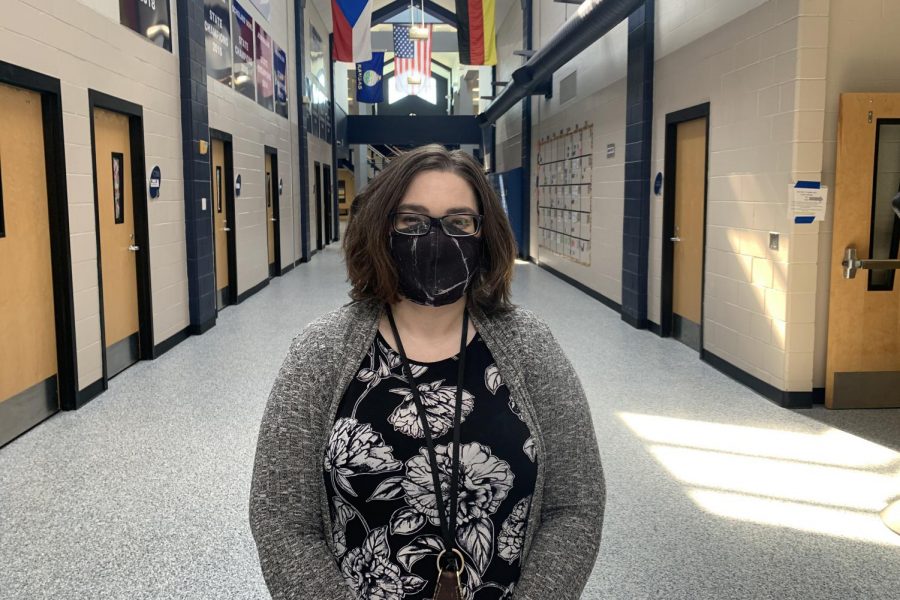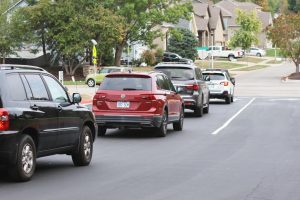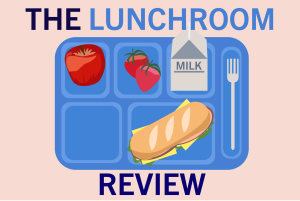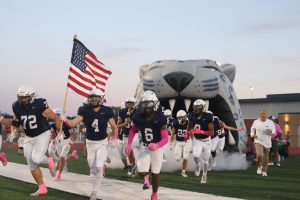Contact Tracing: What is it?
Health services coordinator Tara Harmon-Moore explains what contact tracing is
By Lauryn Daly
Health services coordinator Tara Harmon-Moore explains the ins and outs of contact tracing at the school.
October 7, 2020
Mill Valley News: Can you introduce yourself and tell us about what you do at Mill Valley?
Tara Harmon-Moore: I am the Health Services Coordinator for the district. I supervise all full-time, part-time, and substitute nurses in the district and am responsible for the creation and implementation of all policies and procedures, sourcing and acquisition of equipment and supplies, working collaboratively with in-district leadership as well as external contacts like JCDHE and other area Health Services Directors. I also serve on the board of the Kansas School Nurse Organization. Additionally, in this pandemic year, I am the COVID-19 liaison with the health department, the district’s primary contact tracer, and supervise the district’s contact tracing protocol.
MVN: What is contact tracing?
TH: Contact tracing involves identifying and monitoring contacts who have been exposed to individuals with a confirmed or probable diagnosis of COVID-19.
MVN: Why does the school keep a record for contract tracing?
TH: First, the safety and well-being of our staff and students is our highest priority. We really care about our people and their families. Second, schools are mandatory reporters for contagious and infectious diseases as it relates to public health. School nurses have always had a responsibility to keep records for any communicable illness, like influenza, measles, chickenpox, etc., and play a key role in the public health safety net.
MVN: What is the difference between contact tracing and case investigation?
TH: Case investigation occurs when an individual is identified as having a confirmed or probable diagnosis of COVID-19. Contact tracing involves identifying and monitoring contacts who have been exposed to individuals with a confirmed or probable diagnosis of COVID-19.
MVN: What should students be aware of to prevent contact with others?
TH: If you are not feeling well or have been exposed to COVID-19, staying home is the single most important strategy to reduce risk. In addition to staying home, wear a well-fitting mask, practice good handwashing, cover coughs and sneezes (even with a mask on), and avoid touching your face.
MVN: What motions does the school have in place to track it?
TH: School nurses, in partnership with parents, are our first line of defense. Building nurses gather information about symptoms and submit a report to me. I maintain an ongoing, secured database and report my findings to JCDHE. Ultimately, the county health department is responsible for tracking all communicable diseases.
MVN: How would a student be contacted if they had been in contact with someone that got COVD?
TH: From an infectious disease standpoint, direct contact means you have been with a COVID-19 positive person unmasked, within six feet, for greater than 10 minutes. Contact tracers call these individuals. If you were simply in the building at the same time, you would receive a general exposure letter. If you were in the same classroom with a COVID-19 positive person but you were both wearing masks properly, then you would receive a low-risk letter. This is why it is so important to wear your mask at school.
MVN: Who would a student hear from if they are involved in a contract tracing investigation?
TH: A district contact tracer (nurse) would call them.
MVN: What should a student or teacher do if they had been in contact with a confirmed case?
TH: If you are a direct contact of a confirmed case, your first step should be to stay home. Next, you should inform your school nurse.
MVN: What are some general reminders to students and the general public about staying safe and keeping others safe during the pandemic?
TH: Mitigating factors truly do work…wear a mask, practice social distancing, wash your hands, don’t touch your face and stay home if you aren’t feeling well or have been exposed. We know these are not easy when you just want to enjoy being in high school, but if we all truly practiced mitigation it would be far easier to break the chain of disease transmission and keep COVID-19 under control.









